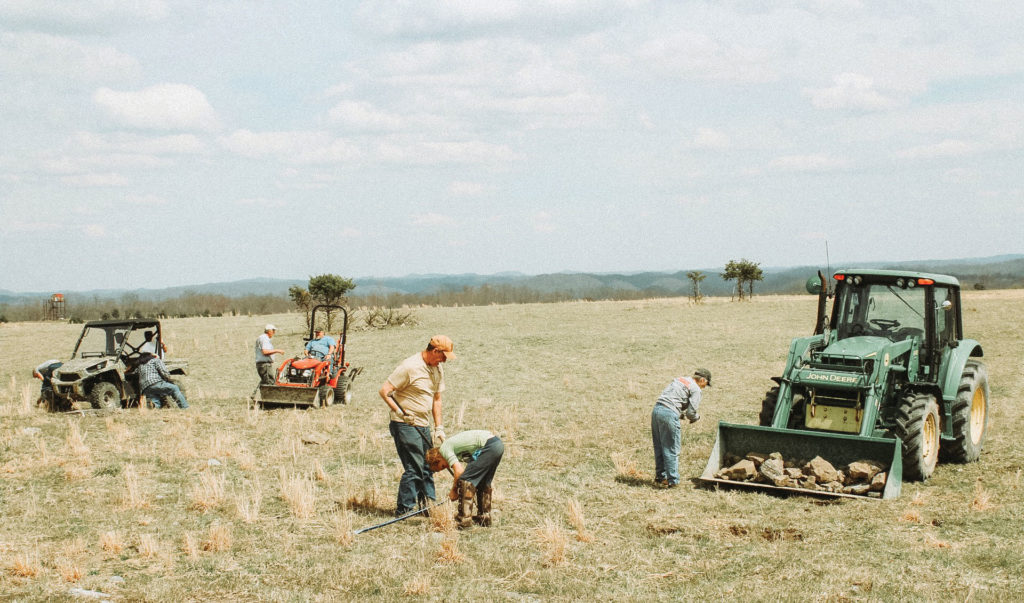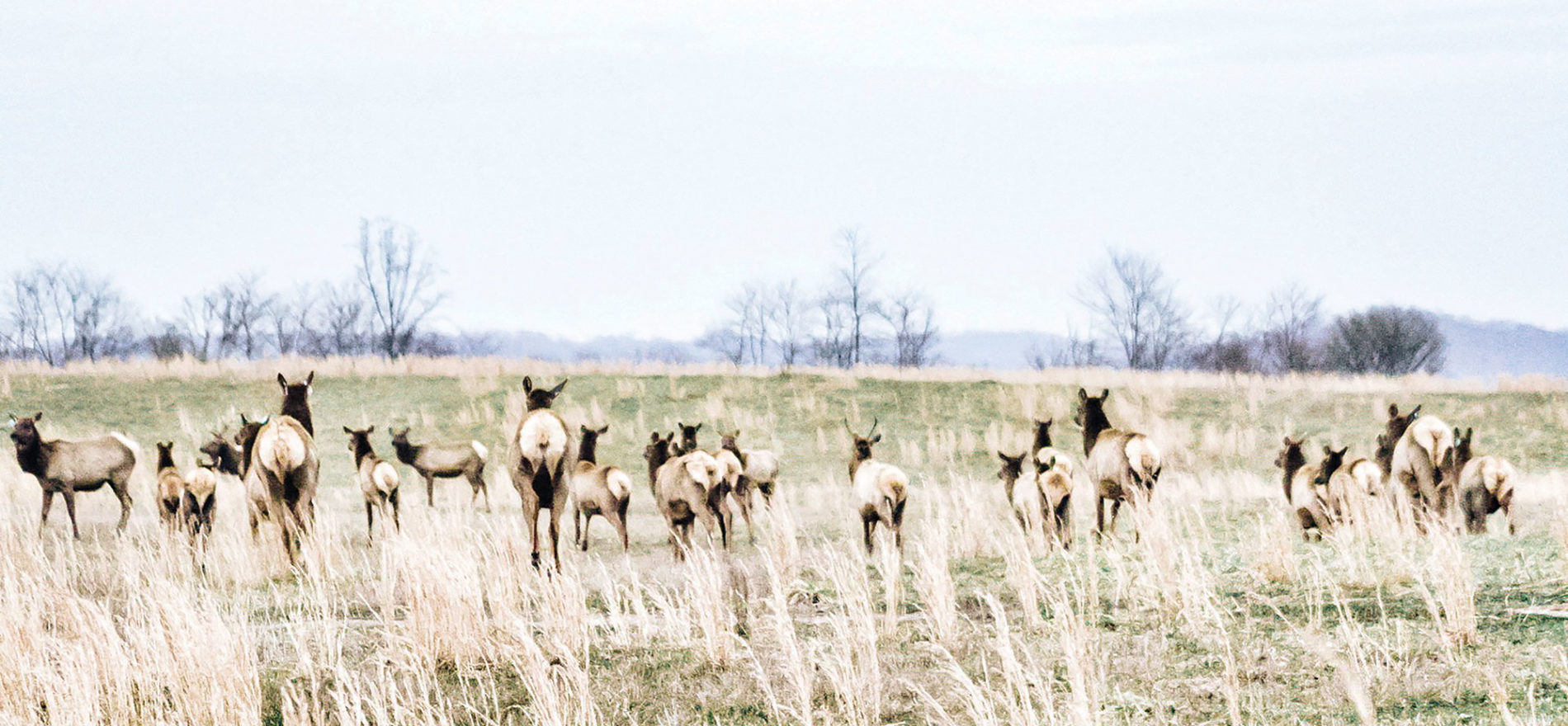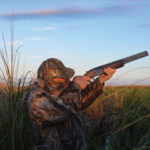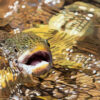It was the last Friday in March. With winter behind us, spring had finally made an appearance. The air was crisp and fresh. The valley was expansive and lined with gold.
cover photo by Gabriella Hoffman
As dusk started to settle in, I spotted an unlikely figure in the distance. “Dad stop the truck. It’s an elk! Let me photograph it,” I said. He stopped the vehicle and I got my camera ready. With my Canon DSLR in tow, I began snapping photos of the spike bull elk.
Stoic yet graceful, the magnificent animal stood there in the field unperturbed by our group of trucks. He was full-bodied, healthy, and boasted light tan fur.
After he darted off to follow some elk cows, we followed the rest of our party to the next location. Then, 100 or so members of the burgeoning herd appeared before our eyes. They were wild and free, in their element, deep in the heart of Virginia’s coal country.
This encounter was a great way to kick off festivities for the Virginia Rocky Mountain Elk Foundation (RMEF) state chapter’s annual Elk Rendezvous Weekend.
From March 29-31, 2019, volunteers from around the Commonwealth, nearby West Virginia and as far as Maryland, descended on the town of Grundy in Buchanan County to help restore habitat and meet other elk enthusiasts.
Organizers said 28 people previously showed up to help the year before. Thanks to social media promotion, attendance reached 124.
While I reported on the miracle happening there, my dad, a general contractor by trade and an eager helper, took the lead in helping improve existing shelters and other wildlife-viewing structures on site.
For many of us, that weekend was life-changing. It certainly was for me.

History of Elk in Virginia
Seeing North American elk (Cervus canadensis) thrive downstate isn’t an anomaly. In fact, it’s the “Elk Capital of Virginia.”
But this wasn’t always the case.
Its predecessor, the Eastern elk (Cervus canadensis canadensis), was last reported in Clarke County in 1855. Because of unregulated hunting and habitat loss, the U.S. Fish and Wildlife Service (USFWS) officially declared the subspecies extinct in 1880.
The future of this magnificent, towering creature was bleak and grim. But the formation of wildlife agencies last century would soon inspire great change.
Recovery prospects were greatly boosted after the Federal Aid in Wildlife Restoration Act of 1937, or Pittman-Robertson Act, passed. As excise taxes became collected on hunting licenses, ammunition and firearms, those monies collected started going back to wildlife management, habitat restoration and hunter education courses.
Guided by principles inset in the North American Model of Wildlife Conservation, this established ethics discouraging bad practices like poaching and markets for wild game.
Despite attempts to bring them back here in the early 1900s, it wasn’t until the 2000s when opportunity was ripe for reintroduction.
2012 proved to be a critical turning point in the Virginia’s comeback kid saga.
Over the last seven years, the state’s elk restoration project has taken off thanks to the work of private landowners, RMEF volunteers and Virginia Department of Game and Inland Fisheries (VDGIF) biologists and staff.
From 2012 to 2014, 75 elk were introduced from Kentucky to Grundy in Buchanan County. Today, the Elk Management Zone (EMZ) spans across three counties— Buchanan, Dickenson and Wise—and is home to approximately 250 elk.
Funding for the project derives from RMEF, hunting license sales, and USFWS’s Wildlife and Sport Restoration Program, which is administered by the Pittman-Robertson Act.
By 1907, 40,000 elk roamed the entire country. Today, more than one million of them are found across the nation thanks to RMEF, its supporters and volunteers. The organization’s “Eastern Elk Initiative” has successfully placed Rocky Mountain elk back in their native, historic ranges across the Eastern United States.
A mature bull elk enjoys better grasslands and cover in Virginia. Habitat recovery efforts include planting native grasses with pollinator mixes so bees and butterflies also benefit from healthy habitat. Photo by Emily George
Fertile Ground on Reclaimed Coal Fields
The experiment in Buchanan County, once referred to “America’s Last Frontier” during the 1970s coal boom, is evidence of balanced use in action.
In recent years, the industry took a hit and fewer coal mines dominate the landscape today. Coexistence between well drilling and wildlife conservation, however, is clearly evident. For the sake of the elk, it must be the case.
This harmony was encouraged by the Surface Mining Control and Reclamation Act of 1977, which established guidelines for surface mining activities and coal-mined lands reclamation without encroaching on precious natural resources, flora and fauna. And that is exactly what’s happening in elk country.
I asked Leon Boyd, chair of the Southwest Virginia Coalfields RMEF chapter and vice president of Noah Horn Well Drilling, about this phenomenon during Rendezvous weekend. He explained reclaimed coal mine land is suitable ground for elk to inhabit and thrive.
Boyd was tapped to lead the restoration project in 2010. His primary duties include ensuring healthy habitat, working with landowners on land leases and organizing eco-tours for visitors to the region.
The reclamation put back after mining has taken place, he explained, is “regulated by the Department of Mines, Minerals and Energy.”
Boyd noted how the elk have better grasslands and more clover to enjoy now. Chapter members and volunteers also plant a lot of native grasses with pollinator mixes so bees and butterflies can also benefit.
Emily George, a past VDGIF content specialist, visited the herd in September 2019 and noted, “Each time I visit Grundy, I am in complete awe of the significance of this project.”
A lifelong Virginian, George believes what Boyd and other volunteers have done in coal country is truly special.
“This is a habitat restoration success story that has come to life wholly through hard work and passion,” she said. “This project and its stewards are a role model for wildlife and environmental restoration.”
A Future Managed Hunt Can Ensure Longevity
VDGIF and its stakeholders, including Boyd, believe the expected draw from tourists can help sustain the project’s longevity for the time being.
Ultimately, they expect an elk-hunt drawing similar to Kentucky’s lottery system to sustain the project’s funding. The allure of hunting elk in the Old Dominion will result in increased monies from license tag purchases that will in turn fund conservation. A new 10-year management plan passed on March 21, 2019, aligned with this sentiment.
Boyd added if hunting isn’t a part of the management program, “Then diseases would wipe out our population of deer, elk, turkeys and all.”
For a place that has endured fires, floods, economic downturns and recent tussles with the opioid crisis, locals believe the elk’s comeback to the region can help people bounce back too.
Visit coal country and witness history in the making. Learn more about the Elk Restoration Project at www.dgif.virginia.gov/wildlife/elk.
Gabriella Hoffman is an award-winning freelance outdoor writer. Her work has been featured in Verily Magazine, Sporting Classics Daily, Sporting Classics Magazine, Field & Stream, Outdoor Life, and other publications. She lives in Alexandria, Virginia.


















